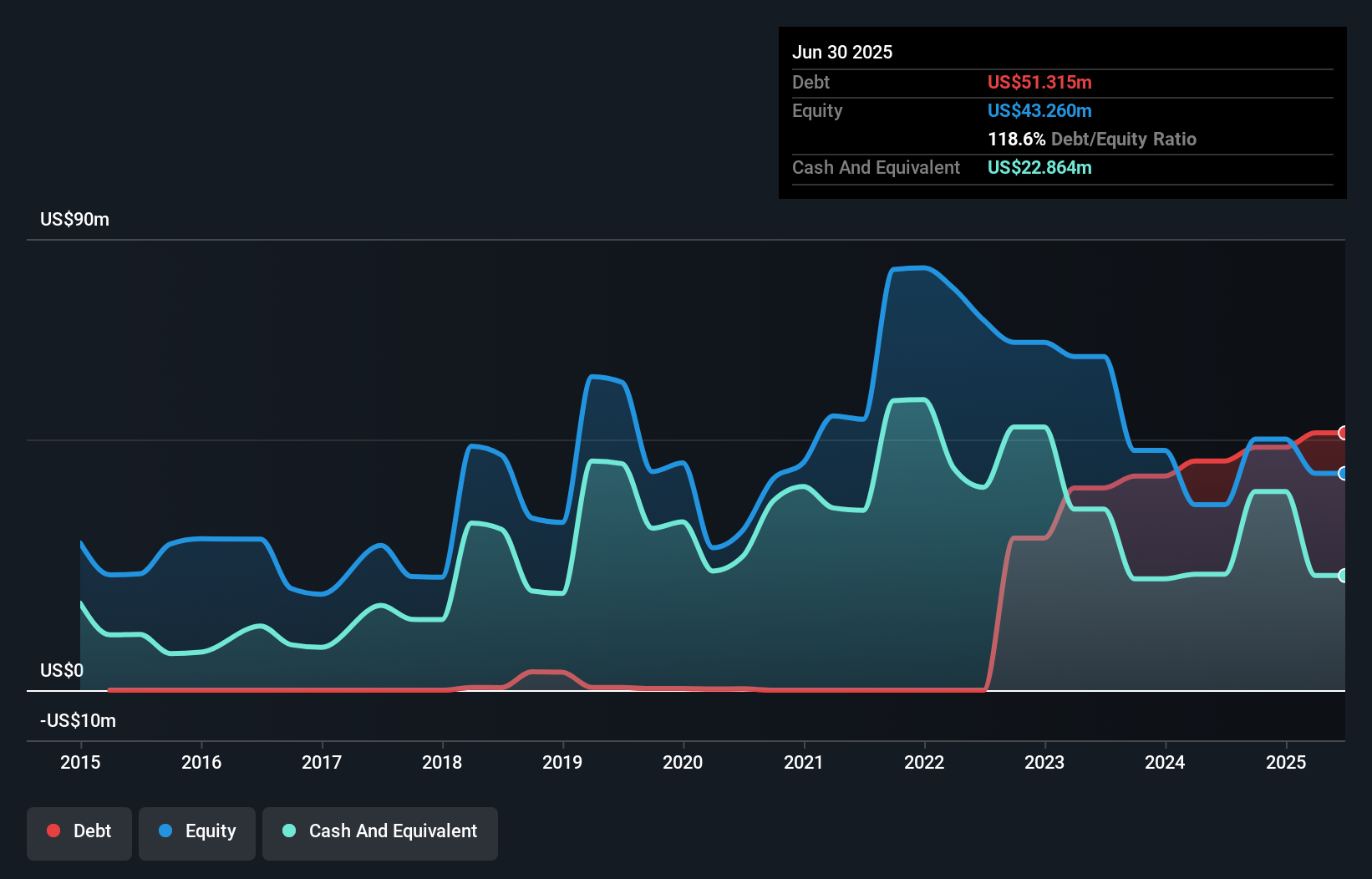Would Seeing Machines (LON:SEE) Be Better Off With Less Debt?
The external fund manager backed by Berkshire Hathaway's Charlie Munger, Li Lu, makes no bones about it when he says 'The biggest investment risk is not the volatility of prices, but whether you will suffer a permanent loss of capital.' It's only natural to consider a company's balance sheet when you examine how risky it is, since debt is often involved when a business collapses. Importantly, Seeing Machines Limited (LON:SEE) does carry debt. But is this debt a concern to shareholders?
Why Does Debt Bring Risk?
Generally speaking, debt only becomes a real problem when a company can't easily pay it off, either by raising capital or with its own cash flow. In the worst case scenario, a company can go bankrupt if it cannot pay its creditors. While that is not too common, we often do see indebted companies permanently diluting shareholders because lenders force them to raise capital at a distressed price. Of course, plenty of companies use debt to fund growth, without any negative consequences. When we think about a company's use of debt, we first look at cash and debt together.
What Is Seeing Machines's Net Debt?
As you can see below, at the end of June 2025, Seeing Machines had US$51.3m of debt, up from US$45.7m a year ago. Click the image for more detail. However, it also had US$22.9m in cash, and so its net debt is US$28.5m.

How Healthy Is Seeing Machines' Balance Sheet?
We can see from the most recent balance sheet that Seeing Machines had liabilities of US$21.8m falling due within a year, and liabilities of US$66.2m due beyond that. On the other hand, it had cash of US$22.9m and US$17.2m worth of receivables due within a year. So its liabilities total US$48.0m more than the combination of its cash and short-term receivables.
Of course, Seeing Machines has a market capitalization of US$241.6m, so these liabilities are probably manageable. Having said that, it's clear that we should continue to monitor its balance sheet, lest it change for the worse. The balance sheet is clearly the area to focus on when you are analysing debt. But ultimately the future profitability of the business will decide if Seeing Machines can strengthen its balance sheet over time. So if you're focused on the future you can check out this free report showing analyst profit forecasts.
Check out our latest analysis for Seeing Machines
In the last year Seeing Machines had a loss before interest and tax, and actually shrunk its revenue by 7.8%, to US$62m. We would much prefer see growth.
Caveat Emptor
Importantly, Seeing Machines had an earnings before interest and tax (EBIT) loss over the last year. To be specific the EBIT loss came in at US$19m. Considering that alongside the liabilities mentioned above does not give us much confidence that company should be using so much debt. So we think its balance sheet is a little strained, though not beyond repair. Another cause for caution is that is bled US$30m in negative free cash flow over the last twelve months. So in short it's a really risky stock. The balance sheet is clearly the area to focus on when you are analysing debt. But ultimately, every company can contain risks that exist outside of the balance sheet. For example - Seeing Machines has 2 warning signs we think you should be aware of.
When all is said and done, sometimes its easier to focus on companies that don't even need debt. Readers can access a list of growth stocks with zero net debt 100% free, right now.
New: Manage All Your Stock Portfolios in One Place
We've created the ultimate portfolio companion for stock investors, and it's free.
• Connect an unlimited number of Portfolios and see your total in one currency
• Be alerted to new Warning Signs or Risks via email or mobile
• Track the Fair Value of your stocks
Have feedback on this article? Concerned about the content? Get in touch with us directly. Alternatively, email editorial-team (at) simplywallst.com.
This article by Simply Wall St is general in nature. We provide commentary based on historical data and analyst forecasts only using an unbiased methodology and our articles are not intended to be financial advice. It does not constitute a recommendation to buy or sell any stock, and does not take account of your objectives, or your financial situation. We aim to bring you long-term focused analysis driven by fundamental data. Note that our analysis may not factor in the latest price-sensitive company announcements or qualitative material. Simply Wall St has no position in any stocks mentioned.
About AIM:SEE
Seeing Machines
Provides driver and occupant monitoring system technologies in Australia, North America, the Asia Pacific, Europe, and internationally.
Reasonable growth potential and fair value.
Similar Companies
Market Insights
Community Narratives


